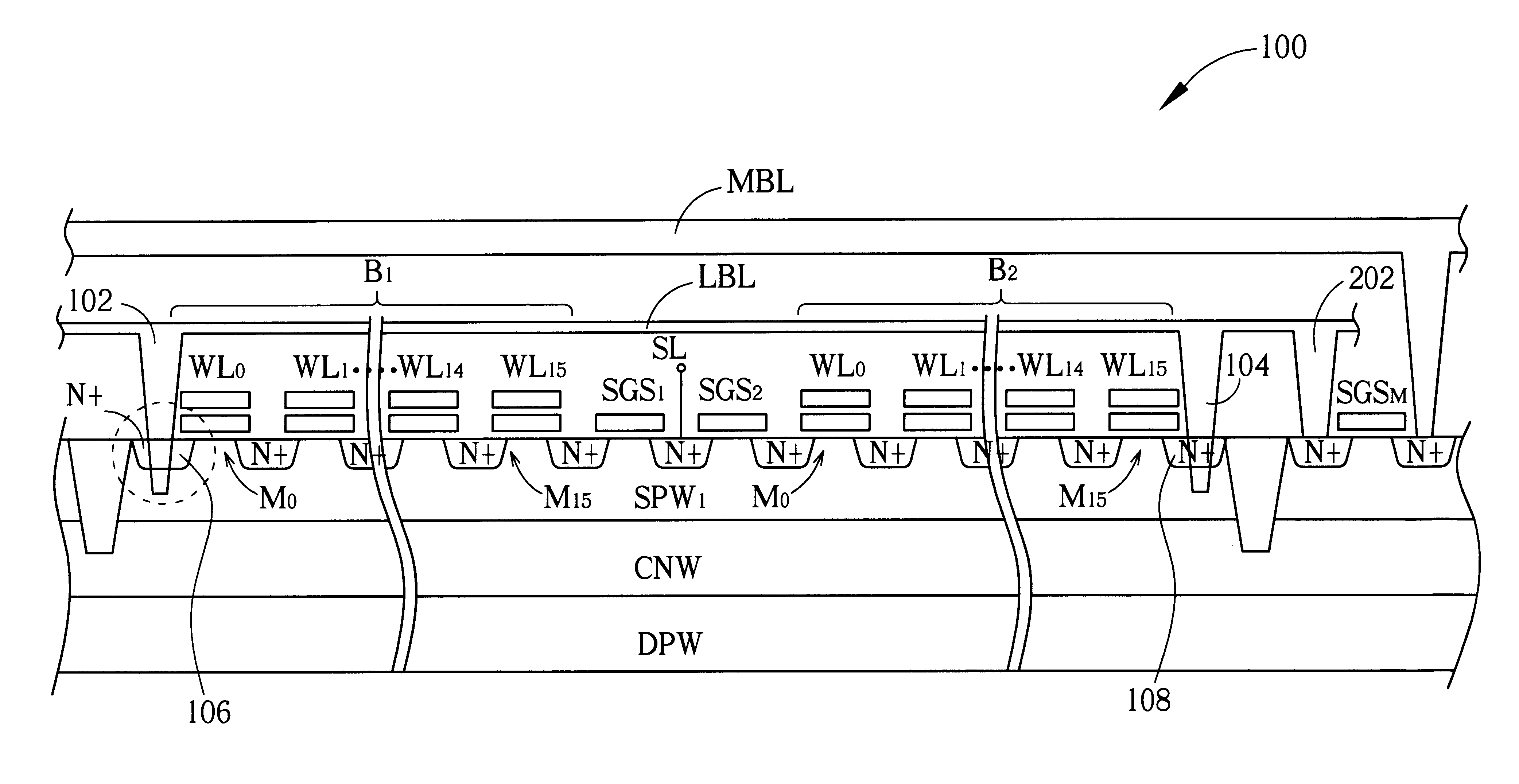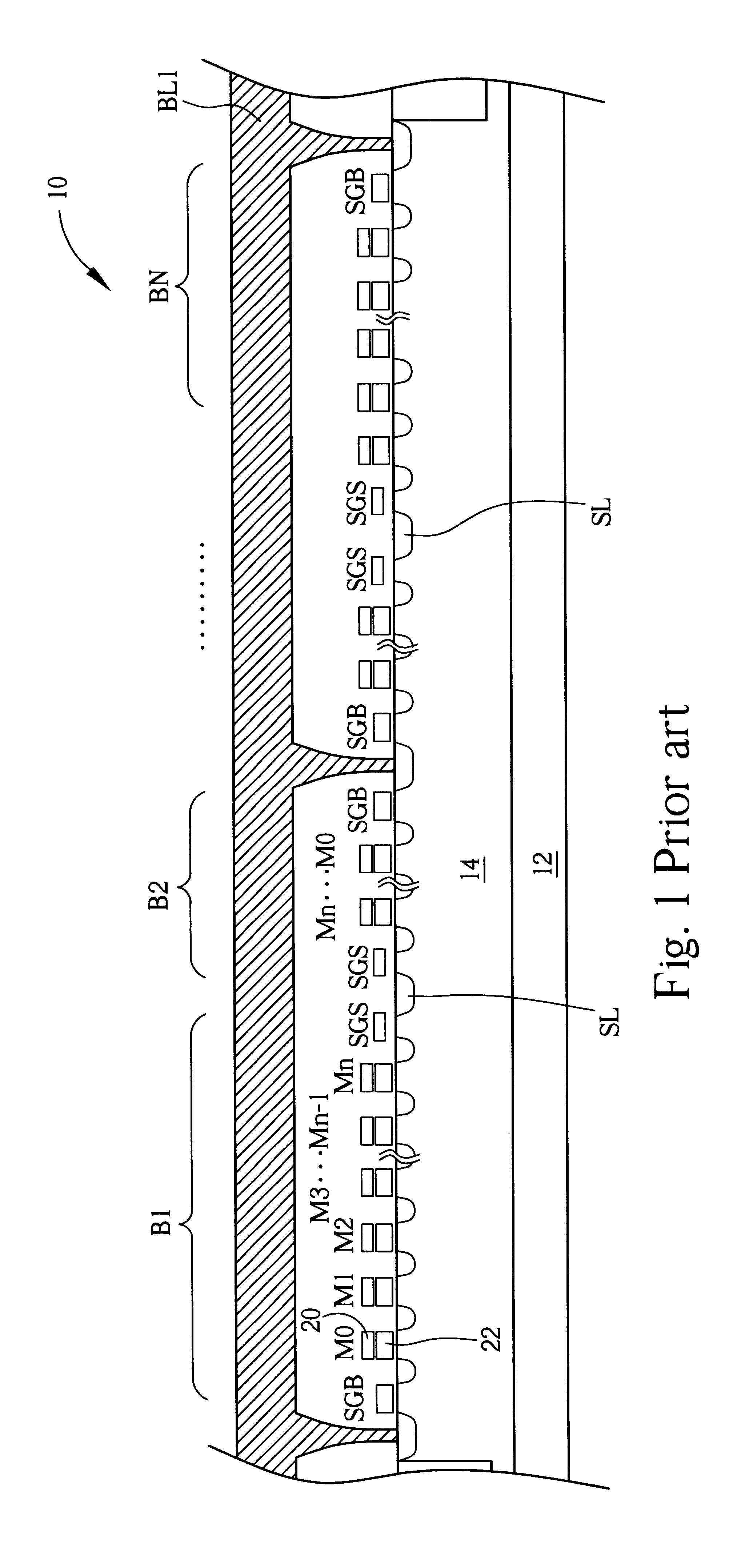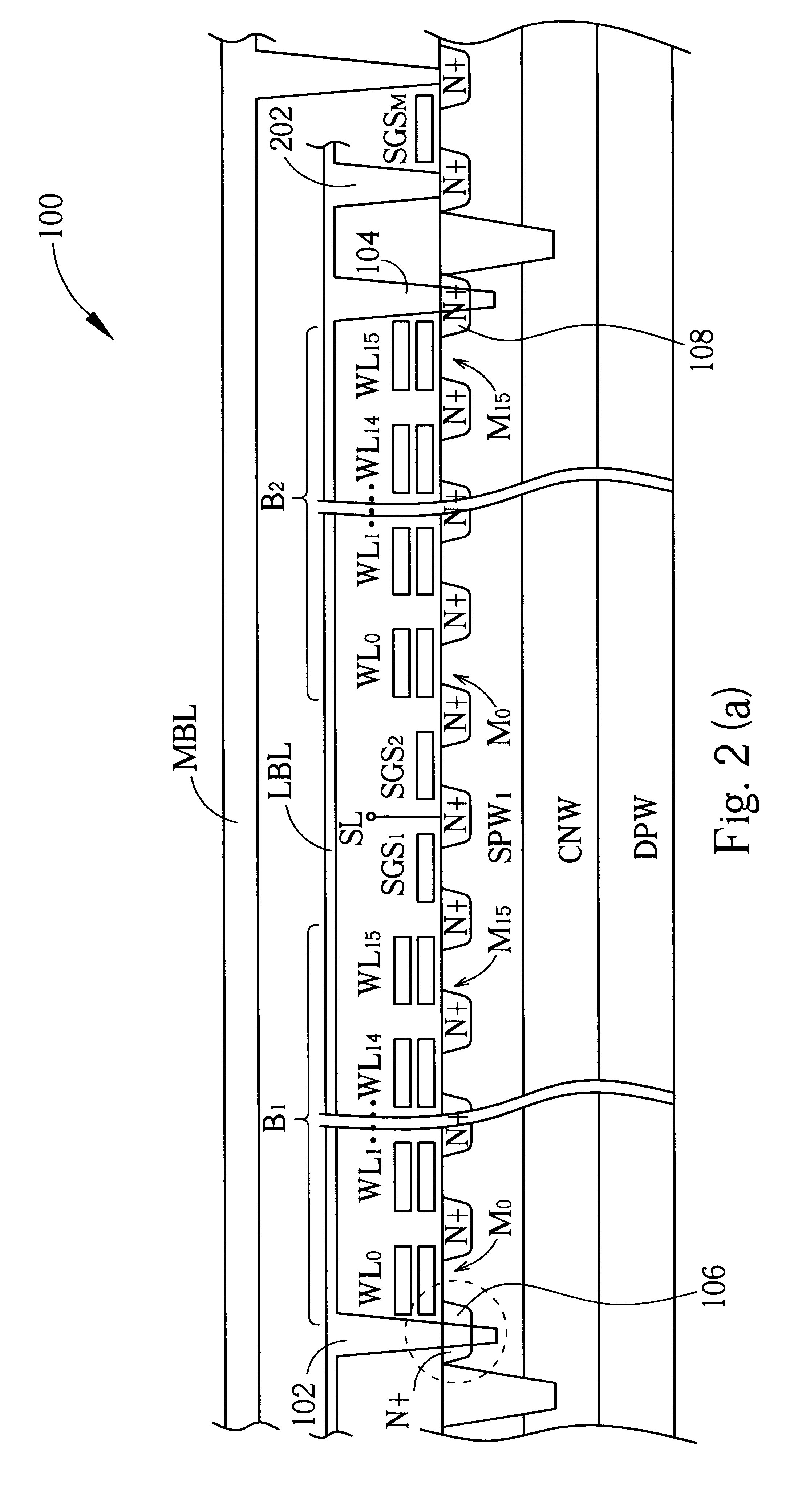Bi-directional Fowler-Nordheim tunneling flash memory
a flash memory and fowler-nordheim tunneling technology, applied in the field of nonvolatile semiconductor memory, can solve the problems of reducing the duration of batteries used in digital products, decelerating programming speed, and very high power consumption of prior art nand type eeprom b>10/b>, and achieve the effect of prolonging the duration of batteries of portable electric devices
- Summary
- Abstract
- Description
- Claims
- Application Information
AI Technical Summary
Benefits of technology
Problems solved by technology
Method used
Image
Examples
Embodiment Construction
ent of the present invention.
[0029]FIG. 11(a) and FIG. 11(b) are a cross-sectional schematic diagram illustrating a BiNOR EEPROM cell and exemplary operation modes thereof (erase, program, and read operations, respectively) according to the fifth preferred embodiment of this invention.
[0030]FIG. 12(a) to FIG. 12(c) are segmental circuit arrangement of the BiNOR EEPROM and exemplary operation modes thereof (erase, program, and read operations, respectively) according to the fifth preferred embodiment of this invention.
[0031]FIG. 13 and FIG. 14 illustrate other embodiments according to this invention.
DETAILED DESCRIPTION
[0032]Referring to FIG. 2(a), a portion of an EEPROM 100 is shown in a cross-sectional view according to the first preferred embodiment of this invention in which only two series connected NAND memory cell blocks B1 and B2 are illustrated for the sake of simplicity. As shown in FIG. 2(a), the EEPROM 100, which is based on a novel low-voltage bi-directional FN write / era...
PUM
 Login to View More
Login to View More Abstract
Description
Claims
Application Information
 Login to View More
Login to View More - R&D
- Intellectual Property
- Life Sciences
- Materials
- Tech Scout
- Unparalleled Data Quality
- Higher Quality Content
- 60% Fewer Hallucinations
Browse by: Latest US Patents, China's latest patents, Technical Efficacy Thesaurus, Application Domain, Technology Topic, Popular Technical Reports.
© 2025 PatSnap. All rights reserved.Legal|Privacy policy|Modern Slavery Act Transparency Statement|Sitemap|About US| Contact US: help@patsnap.com



